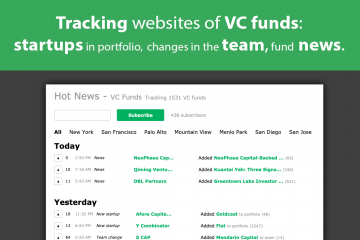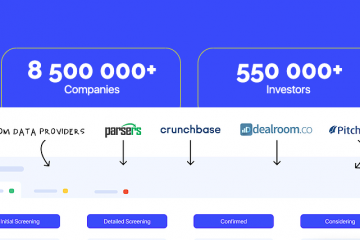How Machine Learning helps business make money from the weather: Big Data and Weather Marketing
In this article, we will consider how weather conditions affect marketing and how a business can make money using data on these external conditions.
How the weather affects sales: Big Data analysis by weather and revenue
Weather sets the mood, which is a very important aspect of consumer behavior – 84% of buyers make impulsive (spontaneous) purchases in online stores (40%) and offline (60-80%). Therefore, marketers all over the world are striving to identify patterns in changing sales levels, depending on external factors such as weather. To solve this problem, Big Data analytical tools are excellent, which help to find a correlation between revenue and weather conditions.
For example, Walmart, the largest retail chain, has determined that the wind affects the sale of berries that diverge better when there is little wind outside and the temperature is not more than 26 degrees Celsius. Thanks to the knowledge of this relationship, the company launched active advertising in regions with similar weather conditions and increased the sales level of these products by 3 times. Similarly, marketing campaigns for burgers were carried out: analysis of sales data and weather information showed that minced meat sells well when the street is warm enough, light wind and sunny, and salads are bought well in light winds and temperatures not exceeding 25 C. Sale of burgers in places with such weather conditions increased by 18%.
Walmart has also been displaying products on the website for several years, depending on weather conditions: in the rain, first of all, umbrellas are displayed, and if cooling is expected – warm clothes.
Big weather data for Walmart is provided by The Weather Company, an information and analytical company, which has been a subsidiary of the IBM Watson & Cloud Platform business unit since 2016. In addition to information from weather stations, The Weather Company collects data from more than 800 different types of sources: 40 million portable devices with a mobile application. In particular, on Apple phones and tablets, the weather widget takes information from The Weather Company. Also, this weather service has become native (pre-installed) on all Samsung S8 or S8 + devices. In addition, weather information is collected daily from 200,000 home stations located around the world, and even from 50,000 flights. As a result, more than 100 TB of data is obtained every day, which allows you to update the weather forecast every 15 minutes with an accuracy of 500 square meters in some regions.
By combining weather data with the user’s geolocation and consumer preferences using Big Data systems, Walmart expects to use drones to deliver its products. Currently, drones used in commercial transportation fly a relatively short distance (about 10 km). Just within this distance from Walmart stores, almost half (49%) of The Weather Company app users live.
In Russia, a case in point of weather-sensitive marketing is the Hoff furniture hypermarket case, which regulated rates in Yandex.Direct and Google Ads advertising networks based on air temperature, cloud cover and precipitation. This allowed the company to increase sales of category goods by 64%, and conversion to purchase – by 21% with an increase in expenses by 18.5%.
How weather marketing works
In the case of the Hoff furniture hypermarket, the following automatic rules were set up for contextual advertising of garden furniture, which regulate the rates depending on the weather forecast under three conditions:
1. daily temperature of the current day;
2. type of precipitation;
3. rainfall.
The Gismeteo website was selected as the source of forecast data for the target regions. Every day at 4 a.m., the Alytics contextual advertising automation system downloaded the current day weather forecast from Gismeteo using the API. At the same time, the general trend of weather conditions was taken into account: in particular, the summer of 2015 was rainy and cold, therefore, small rainfall assumptions were introduced into the model. Note that the Hoff team of analysts and marketers did not use Data Science tools at full capacity, setting the rules for working with advertising rates based on weather data manually, and not using self-learning Machine Learning algorithms. Thus, the value of advertising bets changed according to the following rules:
1. if the daily air temperature is greater than the threshold value, there are no clouds and precipitation (or cloudy and light rain), then the initial rate increases by 100%;
2. if the daily air temperature is above the threshold value, precipitation (rain) and cloud cover are expected, then the initial rate increases by 50%;
3. if the daily air temperature is less than the threshold value, heavy precipitation and high cloud cover are expected (cloudy), then the initial rate does not change.
As a result of applying the above scheme, following the results of several months, the Hoff furniture hypermarket was able to significantly increase sales of garden furniture [3]:
4. an increase in the conversion to purchase by 21% with an increase in spending on advertising campaigns by 18.5% (compared to the same period last year);
5. revenue growth for this category of goods for the reporting period by 64%.
If you not only collect and analyze Big Data about weather and business metrics, but build predictive models and recommendation systems on the basis of this data using Machine Learning, you can achieve more impressive results, as the following foreign companies did.
Machine Learning in Weather Marketing
The American pay-TV channel The Weather Channel monitors the impact of weather on the emotional state of its viewers, in order to take into account the prevailing trends and geolocation of customers, to tell advertisers the most effective ways and moments to submit messages. The effectiveness of this approach was confirmed by the joint marketing campaign of Pantene, Walgreens and The Weather Channel brands. Based on Big Data from The Weather Channel and their own predictive models, Machine Learning, Pantene, and Walgreens touted curly hair at a time when air humidity reached its limit. Thanks to this strategy, in the Walgreens pharmacy chain, sales of Pantene products grew by 10% in July and August, and other hair care products by 4%.
Similarly, by comparing weather and flight data, the Red Roof hotel chain targeted its marketing campaign to areas where flights are often rescheduled or canceled due to inclement weather. Passengers with delayed or canceled flights were offered accommodation in hotels near airports, taking into account the potential occupancy of the room fund based on data on the number of seats on airplanes. As a result, the company accelerated its growth in these regions by 10%.


